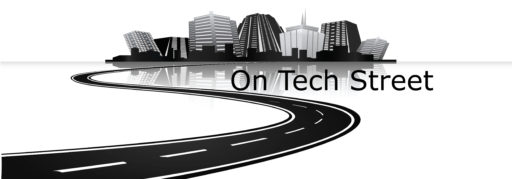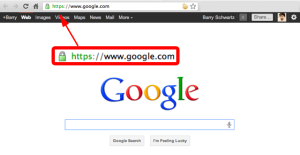 Buying online. Its called e-commerce. African-Americans have gone from Black Friday sales to Cyber Mondays online. Online shopping is perfectly natural. You probably never even think about it, you just do it. Even with all the hacking and and identity theft going on millions of black people, like myself, will go online to find the best price on the product we need or want.
Buying online. Its called e-commerce. African-Americans have gone from Black Friday sales to Cyber Mondays online. Online shopping is perfectly natural. You probably never even think about it, you just do it. Even with all the hacking and and identity theft going on millions of black people, like myself, will go online to find the best price on the product we need or want.
But before you shop you need to trust the website you’re dealing with. Website credibility means money for the merchant. But no credibility means you could get taken. Happens everyday. So I’m gonna say it again even though I’ve said it a thousands times already; Black people don’t play when it comes to our money.
Before I get into e-commerce credibility I want to talk about our credibility. African-Americans are a powerful consumer segment. According to research done by the Neilsen Company. Black buying power will reach $1.1 trillion by 2015. Yes, I said TRILLON! And that number will only grow. Neilsen says our buying power will reach $1.3 trillion by 2017. Clearly we are growing and gaining power as consumers.
Neilsen Study: African-Americans Are More Relevant Than Ever
But if you want to see a black person mad have them buy something and not get what they paid for! That’s why e-commerce credibility is so important when black people shop online. A funny thing about the African-American online shopper; we will do more research than other groups before we purchase. According to TheMinorityeye.com website 45% of black shoppers utilize the Internet early in their purchase process before we decide on a product or service. It takes black people longer to make a purchase. It means we are careful with our money. Do you need me to say it again?
Now we can talk about e-commerce credibility. Black people know the big names like Amazon, eBay, Macy’s, Walmart. But when you shop you will sometimes find a unique item or a special price for something. But is that website trustworthy? That’s the big question here. Here are ten steps you can take to protect yourself when shopping online
1) Know who you are dealing with – The birth of the Internet and e-commerce resulted in a truly global market place. There is no where in the world you can’t shop. So your retailer may be in another country. Consider these things, is the name recognizable like Amazon.com or Walmart.com? These companies have solid reputations. But sometimes you have to establish the identity of the smaller less known online retailers. So make sure to investigate the name and company registration details here in the U.S. Make sure you have a way to contact the company. Look for an an e-mail, postal address and telephone number and know definitely where the company’s headquarters is based. If you can’t find this information something is wrong. And test the companies response by sending them an email asking questions about their products or services. Did they respond quickly? Was the response acceptable and professional? And here is something else to look for, how is their English? Is it acceptable or poorly written with spelling and grammar errors. That’s a tip off that you need to investigate further. And finally check their online reputation by using the Better Business Bureau website. You can also visit websites like Scamadviser.com. This website allows you to enter the website address and get a fast review of the sites credibility.
2) Check their reputation –An online retailer may have a legitimate business but that doesn’t mean he has satisfied customers. Lets be real, some places will tell you all sales are final. And customer satisfaction is not a priority. So make sure you investigate the companies reputation thoroughly. Again the BBB is a good place to start. What is their return policy? Check online for customer feedback and issues. Are they rated highly by customers?
3) Understand billing, guarantees and delivery before you buy anything – Be wary of hidden costs and payment details before sending credit card details. Keep an eye out for and calculate these costs into your purchase.
- Packaging costs
- Delivery costs
- Know if you will be billed before or after the product or service is delivered.
- Can you track the item from purchase to delivery to your door? This is crucial for more expensive items. The ability to electronically track your purchase adds to the companies reputation and credibility.
- Does the product come with a guarantee against defects, functioning, appearance and quality?
- What is the return policy? Throughly read the information on the site about cancellations, returns and refunds. Print a copy.
- Who pays if the item is returned? Postage, fees etc.
- If there is a cooling off or grace period for expensive items. Some retailers will actually give you a ‘regret’ period, usually 48 hours, where you can cancel or return a really expensive purchase.
4) Thoroughly review the site’s privacy and security policy. Reputable retailers are open about their data collection. Somewhere on the website they will outline exactly what data they collect from you and what they do with it. Many will display a web-seal of approval or trust mark such as Trust-e that sets standards for the treatment of your information. Research this privacy policy to understand how the company will use your information after your purchase. Some companies will use your information to email you with updates, to inquire about your level of satisfaction, or offer you other products or deals. Some retailers also sell your information to third parties. That’s where your email spam comes from. Ultimately you must decide what much information you are prepared to give. But the problem with that is that you do not always get that information upfront. Or you may have no choice in the matter. Except to shop elsewhere and that is definitely a powerful message. If you really want to make an impact simply email the company and tell the you didn’t buy from them because of their privacy policy.
5) Use only secure websites – Ok, your investigation is complete and you’re satisfied that the company you are purchasing from is legit. Now for the transaction. You need to make double sure that your credit card data is processed using a secure connection. Commonly known as Secured Sockets Layer (SSL) this is the most commonly used form of encryption used online. Your credit card data is encrypted by SSL and broken into small pieces so it cannot be read by a cyber criminal. To ensure that you are using SSL technology you need to check your browser for the following:
- Your browser may be set to alert you that you are entering a secure area. Unless you are required to log in before shopping the secure area is the first page where you enter your personal information.
- Look for the ‘https:’ on your browser URL address window.
That final “s” is telling you that the site is secure. But unless you were required to sign in from the beginning you won’t see the “s” until you are ready to complete your transaction.
![]()
- Look for the little green padlock in the URL window. It should be locked or closed. If it is open then assume the site is not secure and don’t enter any data no matter how bad your want the product. Transmitting data over an un-secure connection is asking for trouble. Its called “being out in the open.”
- Another symbol to look out for is the unbroken key. It also indicates a secure website.
6) Attention to detail – Be sure to enter the correct information when submitting your order. An incorrect address, number of items or the wrong item code can cause some serious headaches. And that is not the way you want to test their customer service! And make sure their math is correct. Check for hidden fees like re-stocking if you return the item. Look for convenience fees, unusual shipping fees and other sneaky charges some retailers attach to your purchase. Double check this information before you click ‘buy’. After you have completed the purchase start keeping records. Record your purchase details to include a receipt of the final price, email and credit card confirmations shipping details dates and times. If you can’t print them then do a screenshot of the information and save it or print that out. Remember, a paper trail is powerful tool.
7) Use a credit card with online fraud protection. When all else fails its nice to know your credit card has a policy that protects your from online fraud. You can find the best credit cards for fighting fraud here. Make sure you read that policy and stick to it. It can save you from losing a lot of money. Many credit card companies offer protection against fraudulent purchases and includes coverage that includes online purchases. Check with your bank or credit card provider to see what protection you have. It may be time to switch to a safer card.
8) Use a good Phishing Filter –There are various phishing filters and some good ones are actually free. For Windows users there is Microsoft SmartScreen Filter for Internet Explorer. This software will alert you when it detects a suspicious website.
9) Be alert to email scams – Email scams are designed to gather personal information such as passwords and credit card details. These are known as phishing emails. And remember there is no software that can protect your from or detect a scam. Scammers send out millions of emails day after day hoping to snag unsuspecting or gullible victims. When they find one they immediately go after their confidential information often. These emails may mimic known retailers and look quite convincing. But keep in mind that legitimate companies, including all banks, never, ever send you an email requesting login, password, or credit card details. Don’t ever click on that link! Delete it and report it to your bank. If you have any doubts, go to the website on your own by typing in the web address of the company. Again; do not click on that link. It may be malware or some other virus.
Being black and online requires you to be alert and knowledgeable. Don’t be somebody’s sucker when you shop online. Learn what you need to know to protect yourself because AACR rule #1 is; The only laws on the Internet are the ones you impose and enforce.
Now you know.

